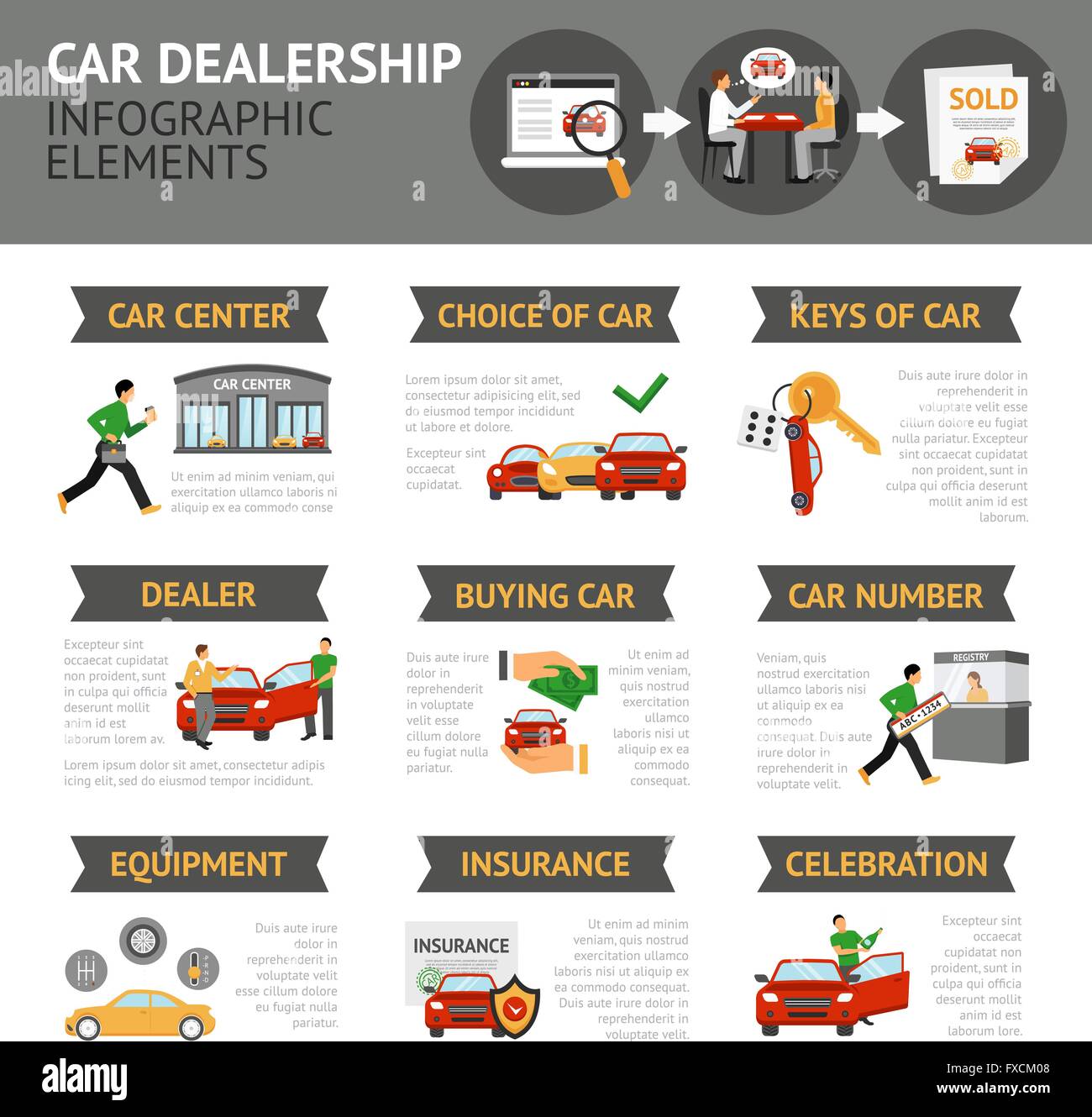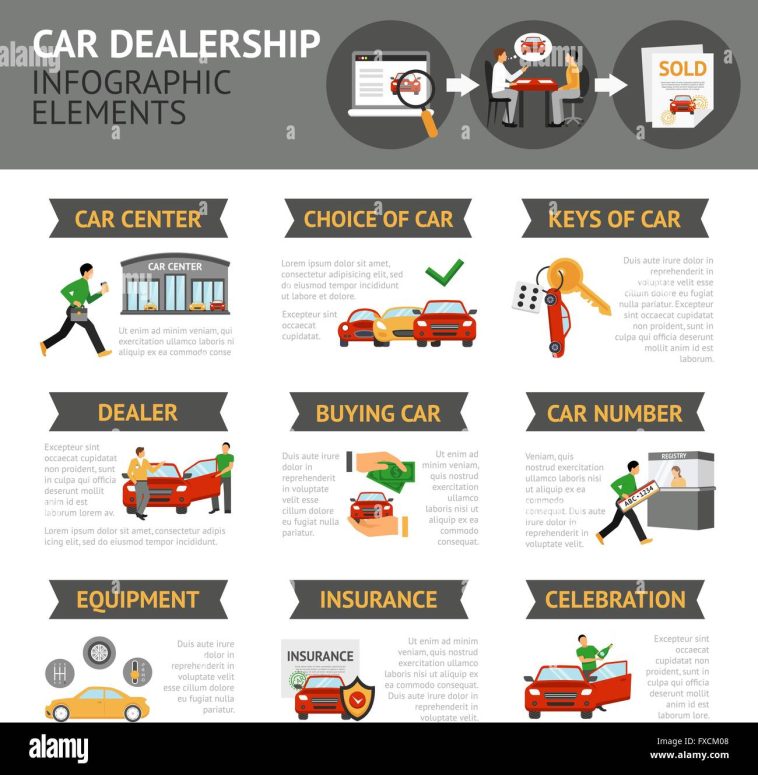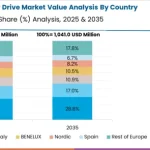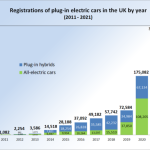
International Auto Franchises and Their Economic Impact: A Closer Look
The automotive landscape in the United States has seen many twists and turns over the decades. With over 9,000 international nameplate dealer franchises now spreading across the country, the economic influence of these businesses is both vast and multifaceted. In this opinion editorial, we take a closer look at how these dealerships are reshaping manufacturing, employment, and community development, while also examining the effects of policy changes, international trade agreements, and emerging global players on the industry.
Economic Power and Manufacturing Growth
At the heart of this discussion lies a recent economic impact report released by the American International Automobile Dealers Association (AIADA). This report reveals that international nameplate brands make up more than half of the vehicles built in the United States today. With over 4.9 million vehicles produced in 2024 across 31 international facilities in nine states and with four new plants expected to launch in 2025, it is impossible not to appreciate the sheer scale of this operation.
Equally impressive is the employment impact—directly employing 162,000 Americans—and the significant contribution to parts and materials purchases, which amount to around $25 billion. In addition, direct payrolls have reached an estimated $16.5 billion. These figures represent more than just numbers on a report; they speak to the essential role that international auto franchises play in supporting broad segments of the U.S. economy.
Key Statistics at a Glance
| Economic Metric | 2024 Figures |
|---|---|
| Total Vehicles Produced | 4.9 million |
| Number of Facilities | 31 |
| States Impacted | 9 |
| Employment Directly Provided | 162,000 Americans |
| Parts and Materials Purchases | $25 billion |
| Direct Payroll Contributions | $16.5 billion |
While these numbers are impressive, the report also highlights the trickier parts of the economic landscape. Dealerships, manufacturers, and suppliers are faced with tangled issues such as rapidly changing trade environments and policies that can sometimes seem off-putting. As these stakeholders try to steer through a highly competitive industry, the need for stability and clear policy direction has become super important.
New Trade Agreements and Their Implications
One of the most interesting developments covered in the report is the new trade agreement with Japan. This deal is seen as a potential game-changer for international franchises operating in the United States. The agreement, which aims to level the playing field by reducing tariffs, represents both an opportunity and a challenge for dealers and manufacturers alike.
Examining the U.S. – Japan Trade Agreement
While the details of the agreement are still emerging, several points stand out:
- The goal is to reduce tariffs from 25% to 15% on certain vehicle imports.
- The agreement places emphasis on promoting fair competition while still protecting American jobs.
- Both sides are working on handshake agreements that, while promising, remain to be formalized.
This trade deal is a clear signal that international auto companies are ready to adjust their approach in order to adapt to a global economy that is constantly shifting. The new trade framework is designed to strengthen the economic ties between the U.S. and Japan, ensuring that both consumers and businesses can benefit from more competitive pricing and increased production efficiency.
Impact on Community Ties and Regional Development
Beyond the high-level policy changes, another fascinating aspect of AIADA’s report is its emphasis on how international brands have revitalized communities in regions hit by industrial decline. For example, in the American South, brands like BMW and Volvo have played a significant role in replacing lost industries with high-paying, high-tech manufacturing jobs. This has not only improved local economies but also fostered long-standing community relationships, as seen with Toyota’s engagement in areas like flood-stricken Texas.
These stories highlight how international nameplate dealerships are not just large-scale manufacturers, but community builders. Their investments in regional areas demonstrate commitment to local success—a key component of building long-term economic stability.
Tariffs, Trade, and the Nerve-Racking Policy Landscape
The current administration’s 25% tariffs on vehicle imports have been a source of concern for many in the industry. Although these tariffs have not yet directly affected consumers, they have added an extra layer of complexity for manufacturers and suppliers, complicating what is already a nerve-racking environment filled with state and international policy shifts.
Tariff Challenges and Industry Reactions
Dealing with these high tariffs has forced many stakeholders to get into the nitty-gritty of supply chain logistics and pricing strategies. Some of the key issues discussed include:
- Increased production costs for manufacturers due to higher material prices.
- Pressure on suppliers who are struggling to keep costs manageable under the weight of import duties.
- The potential for these tariffs to slow down overall production and delay new projects.
Industry leaders have responded by signing preliminary handshake agreements with major trade partners such as Europe and Japan, with the aim of reducing tariffs from 25% to 15%. However, these agreements are still in their early days and remain in a somewhat uncertain stage. The situation is full of problems for many, given that formal agreements with other key regions like Mexico, Canada, and Korea remain unresolved.
Strategies for Managing Tariff Impacts
Considering these challenges, businesses have adopted several strategies to find their way around the tariff maze. Some of the approaches include:
- Long-term Planning: Manufacturers and dealers are increasingly factoring in future tariff scenarios when planning their production and pricing strategies.
- Cost Absorption: Some companies are temporarily absorbing higher costs to keep consumer prices stable.
- Supplier Diversification: By seeking out new and alternative suppliers, businesses aim to reduce dependency on high-tariff regions.
Each of these approaches is critical in ensuring that the industry can maintain stability in an off-putting and constantly shifting policy environment.
The Electric Vehicle (EV) Industry: Temporary Highs and Long-Term Hurdles
Electric vehicles continue to be a driving force in reshaping the auto industry. However, recent policy shifts have left many stakeholders both excited and anxious about the future. The looming expiration of the $7,500 federal tax credit for EVs on September 30, according to industry expert Cody Lusk, is projected to lead to a temporary spike in sales. Yet, many caution that a one-time surge is not enough to sustain long-term growth.
Short-Term Boost vs. Long-Term Sustainability
In the short term, dealerships might observe a burst of consumer interest as customers rush to take advantage of the tax break before it disappears. However, without a stable roadmap, these sales spikes might only be a temporary high. The EV industry requires consistent policy support and incentive structures to truly thrive in the long run.
Manufacturers have repeatedly expressed the need for certainty. Policy swings, particularly those tied to presidential elections, make it difficult for manufacturers to plan beyond the next few years. Without that consistency, investments in research, development, and manufacturing may slow down, hindering the growth of new EV technologies.
Key Considerations for Sustaining EV Growth
To ensure a sustainable future for electric vehicles, several fine points need attention:
- Policy Stability: Legislators and industry leaders must work together to establish a clear and consistent set of incentives that extend well beyond election cycles. This clarity will help manufacturers invest in long-term EV projects.
- Infrastructure Investment: Alongside sales, there should be significant investment in charging infrastructure to support an increasing EV population. This includes public charging stations and home charging solutions.
- Consumer Confidence: Ensuring that consumers have confidence in the reliability and longevity of EV technology is critical. Educational campaigns and industry-led initiatives can assist in building this trust.
Ultimately, while a short-term boost from tax incentives can be encouraging, it is essential that industry leaders and policymakers work together to develop a strategy that supports EV growth over the coming decades.
Global Competition: Chinese Automakers and Data Privacy Concerns
No discussion about international auto franchises would be complete without addressing the global competitive landscape, particularly the surge of Chinese automakers. With their impressive global momentum, these companies are poised to enter markets that have been historically dominated by American and European brands. However, this growth comes with its own set of tricky parts.
Opportunities and Risks in the Global Market
Chinese automakers bring several exciting prospects to the table:
- Technological Advancements: Many of these companies are investing heavily in electric vehicle technology and innovative features that appeal to a tech-savvy audience.
- Competitive Pricing: Their ability to offer competitive pricing could prove attractive to a broad spectrum of consumers.
Yet, the potential risks are not negligible. Lusk and other industry experts have highlighted concerns about data privacy and state subsidies that could undermine fair competition. For international dealers, the prospect of selling Chinese brands through franchised networks is both enticing and nerve-racking. Many dealers remain cautious, seeking transparent policies and advocating for rules that ensure all players abide by similar standards regarding data security and market practices.
Comparative Analysis: Western vs. Eastern Approaches
| Aspect | Western Brands | Chinese Automakers |
|---|---|---|
| Technological Focus | Steady investment in EV and hybrid systems with extensive R&D | Rapid innovation in EV technology with aggressive market entry |
| Pricing Strategy | Premium pricing with emphasis on brand legacy | Competitive pricing with cost-effective models |
| Regulatory Framework | Strict adherence to data privacy and environmental regulations | Concerns remain over state support and data privacy standards |
The table above helps clarify the fine shades between the two approaches. While Chinese brands promise exciting new options for consumers, the industry must remain vigilant about potential issues that could arise from differences in regulatory standards and business practices.
The Debate on State Franchise Laws: Protecting the Dealer Model
Another contentious topic addressed by Cody Lusk is the ongoing debate surrounding state franchise laws. Recently, a letter from the Alliance for Automotive Innovation to the Department of Justice called for changes that many in the dealer community perceive as a direct challenge to their traditional franchise model. Lusk described this as “an unnecessary slap in the face” to dealers who have long relied on the current system.
Understanding the Franchise Law Controversy
Franchise laws are designed to protect both dealers and consumers by providing a stable framework within which vehicle sales and services can occur. Some of the key points in this debate include:
- Dealer Protections: State franchise laws traditionally offer a buffer for dealers against unfair practices by manufacturers. This includes ensuring that dealers have a say in regional marketing and local operations.
- Consumer Benefits: The stability provided by these laws helps maintain competitive pricing and service quality, benefiting end consumers.
- Industry Autonomy: Dealers argue that any erosion of these protections could undermine the independent business model that has supported communities for decades.
Many in the dealer community fear that loosening these laws could lead to increased centralization of power among manufacturers. As they attempt to figure a path through a potentially overwhelming series of changes, it’s clear that the devil really is in the little details of state franchise law.
What Does the Future Hold?
The current debate is far from settled. While state associations are mobilizing to defend franchise protections, the call for change from industry groups persists. It is a full-of-problems landscape where change could either lead to modernized practices that benefit everyone or, if mismanaged, risk destabilizing the traditional dealer model. For younger dealers stepping into advocacy roles, the challenge will be to craft policies that honor past successes while embracing necessary change for future innovation.
Looking Ahead: The Road to Stability and Growth
The auto industry, particularly the segment dominated by international nameplate dealerships, stands at a crossroads. On one hand, these businesses have driven significant economic growth, revitalized communities, and provided employment opportunities across a widespread region. On the other hand, they face a series of confusing bits—from tariff challenges and evolving trade agreements to the challenges of emerging EV policies and global market competition—that require smart, flexible strategies to address.
Balancing Stability with Innovation
Looking forward, industry leaders must find ways to balance the need for steady, reliable policies with the ongoing drive for innovation in manufacturing and technology. Some suggested steps include:
- Collaborative Policy Making: Encouraging open dialogue between lawmakers, manufacturers, and dealerships to find common ground on tariff issues and trade policies.
- Long-Term Investment in EV Infrastructure: Creating incentive programs and partnership models that ensure electric vehicle technology is supported by robust charging and maintenance networks.
- Strengthening Dealer Protections: Revisiting franchise laws in a way that protects the essential role of independent dealers while still allowing manufacturers room to innovate.
These steps are not a panacea, but they can help steer through the tangled issues that define the current automotive landscape. It is critical for communities, businesses, and policymakers to work together in creating an environment that nurtures both tradition and progress.
Community Reinvestment and Economic Revitalization
Beyond the immediate pressures of international trade and policy shifts, one cannot overlook the broader benefits that auto dealerships have on local economies. Many communities, especially those in parts of the South which faced industrial decline, have seen a renaissance thanks to the arrival and growth of international brands. This economic revitalization is characterized by:
- Job Creation: The establishment of new manufacturing plants and production lines actively combats local unemployment.
- Infrastructure Upgrades: Investments in parts and technology not only bolster the manufacturing sector but also spur improvements in local infrastructure.
- Community Engagement: Many large dealerships partake in local initiatives, supporting education, technology, and community development projects that enrich the lives of local residents.
It is clear that the vibrancy of local economies is closely tied to how well these dealerships manage their approach in a shifting global environment. The hope is that as international brands continue to invest in local communities, these investments will deliver long-term prosperity and sustained growth.
Final Thoughts: Paving the Way for Future Success
The auto industry is renowned for its ever-changing nature, and recent events highlight both the opportunities and the challenges that lie ahead. International auto franchises are not just testing the limits of modern manufacturing and economic impact—they are setting the stage for how this critical sector will evolve for years to come.
From the promising developments of new trade agreements with Japan to the nerve-racking details of tariff impacts and the fine points of EV policy changes, industry leaders must get into every little detail to craft policies that promote stability while inviting innovation. Whether it is the temporary spike in electric vehicle sales due to looming tax credit expirations or the potential long-term shake-up brought about by the entry of Chinese automakers into the U.S. market, every decision made in boardrooms today could shape the automotive industry tomorrow.
The Path Forward: Key Strategies for Industry Leaders
For decision-makers in the automotive sector, charting a course through these tangled issues will require a balanced approach. Here are some key strategies that experts believe will help manage your way through these challenges:
- Embrace Policy Certainty: Push for legislation that remains stable regardless of the political climate, ensuring that long-term planning is feasible and that investments remain secure.
- Invest in Innovation: Prioritize research and development in new technologies, particularly for electric vehicles, while also ensuring that supporting infrastructure is up-to-date and accessible.
- Strengthen Community Ties: Continue to build on the community engagement initiatives that have helped revitalize local economies, proving that large-scale manufacturing can go hand in hand with community well-being.
- Foster International Cooperation: Encourage open dialogue with international trade partners to ensure that agreements are beneficial and that all players adhere to fair competitive practices.
These strategies, if implemented thoughtfully, could serve as a blueprint for navigating a future that is as promising as it is challenging. They remind us that even in an industry loaded with issues, the ability to adapt and innovate is essential.
A Call for Collaborative Solutions
Ultimately, the road ahead is not one that any single entity can travel alone. Policymakers, manufacturers, dealers, and community leaders must join forces to create an environment that not only supports economic stability but also fosters the spirit of innovation. The delicate balance between policy certainty and the need for progress will require us all to dig into the details, work through the complicated pieces, and embrace flexibility in the face of uncertainty.
In many ways, the story of international auto franchises in the U.S. mirrors the broader American narrative of reinvention and resilience. While the industry faces its share of nerve-racking challenges—from tariff complications and policy shifts to global competition and evolving technology—it also presents a powerful model for success and growth. The ability to adapt and respond to both local needs and global pressures is what makes this industry truly remarkable.
Conclusion: Steering the Future of the Auto Industry
In conclusion, the economic influence of international nameplate dealerships is both far-reaching and deeply intertwined with the overall health of the U.S. economy. The industry has played a super important role in modernizing manufacturing processes, bolstering regional economies, and creating jobs for thousands of Americans. However, as highlighted in AIADA’s report, there are many tangled issues—from intimidating tariff policies and temporary EV sales spikes to the broader challenges of global competition and franchise law debates—that require careful consideration and innovative solutions.
Industry leaders must find their way through these twists and turns while maintaining the delicate balance between safeguarding dealer traditions and embracing new technologies. With clear areas of focus such as policy stability, community reinvestment, and international cooperation, there is a promising path forward, albeit one that demands continuous adaptation and collective effort.
As we observe the next chapter in the evolution of the automotive industry, the importance of thoughtful leadership and empathetic policymaking becomes even more evident. Stakeholders across the spectrum must work together, leveraging every little twist and every small distinction in policy details, to ensure that the industry not only survives but thrives in an era of rapid change.
For many, the ride ahead may indeed seem intimidating—that nerve-racking uncertainty in the face of potential global market shifts and domestic policy changes is something that both manufacturers and dealers will need to manage their way through. Yet, by focusing on collaborative solutions and a commitment to long-term stability, the auto industry can steer a path to a stable and prosperous future.
In a world characterized by rapid technological advances and evolving consumer needs, the role of international auto franchises stands as a testament to resilience and innovation. These dealerships have not only delivered economic benefits but also transformed communities, acting as modern-day engines of growth. As trends continue to shift and new challenges emerge, a unified industry approach, built on the foundations of open dialogue and strategic planning, will be key to ensuring that the future remains bright for all involved.
In the end, the success of the international auto franchising model will depend on the industry’s ability to leverage its economic might, adapt to policy changes with nimble strategies, and foster both local and global partnerships. The road ahead is complex and occasional overbearing, but with every challenge comes an opportunity to innovate and grow.
As we take a closer look at everything from reducing troublesome tariffs and recalibrating trade agreements, to guaranteeing that policy supports like EV tax credits are consistent, the task is to stay flexible and focused on long-term objectives. It is through this dedicated approach—where each stakeholder is willing to examine the fine points and work through the confusing bits together—that the future of the automotive industry will be secured for generations to come.
Ultimately, while the share of international auto franchises in the modern economy is undeniably significant, it is just the beginning of a broader transformation—a transformation that will require careful handling of every small twist, every subtle part of policy, and every community impact. Only then can the industry claim not just economic success, but also a lasting legacy of sustainable growth and innovation for the nation.
Originally Post From https://www.cbtnews.com/aiadas-cody-lusk-breaks-down-the-economic-power-of-international-nameplate-dealers/
Read more about this topic at
Economic Impact of California Dealers
2025 Economic Outlook for Auto Dealers: A Goldilocks …


